|
The
tradition of men playing women's parts has been reversed by the all
female production of ROMEO &
JULIET by William Shakespeare - Three's Company &
Smooth Faced
Gentlemen.

Ashlea
Kaye in William
Shakespeare's Romeo and Juliet
Shakespeare's greatest story is faithfully and provocatively retold by an exceptional all-female
cast - seven ladies in all, some playing multiple roles. The classic tale of love and rage heralds a bold new voice in
British theatre, helmed on its maiden voyage by Buxton's own Three's Company. 'An extraordinarily talented and inventive company'.
Arts Centre - Studio.
18-19 July
2012: 7:30pm to 8:45pm,
20 July
2012: 9pm to 10:15pm,
21 July: 7:30pm to 8:45pm £8.50 (Child and Conc £7.50)
Bookings via www.undergroundvenues.co.uk. Bookings (noon-3pm) & info: 02081 440070. Other prices/discounts available.
JASON
HUDSON observed:
-
Versatile
cast attack parts with energy and ferocity.
-
Key
success was the use of economical use of space.
-
Edited
to a 75 minute play skillfully and with balance.
-
Ashlea Kaye was quite magnetic as
Juliet.
-
Leila
Sykes equally impressive as the doomed Romeo.
-
Henri Merriam
switches from Capulet and Mercutio with ease.
-
Fran
Binefa played the Nurse with magnificent dexterity doubling as
Paris.
-
Well directed with a genuine awareness of the craft of making
theatre.
-
Hard working cast promised so much and delivered on every count.
SEE
FULL TEXT: Review THREE'S
COMPANY Three’s
Company is an award-winning three-man theatre company founded in 2000,
with work to date having appeared in London and Manchester and the
Buxton and Edinburgh Fringes. Three’s
Company work with actors and designers around worldwide to produce
unique storytelling, to stimulate and entertain audiences. Michael
Grady-Hall, Yaz Al-Shaater have completed directing and acting at the
RADA Central School of Speech and Dram and Tom Crawshaw the similarly at
Oxford University. Thye are now firmly established in London. See their
website for details: WhatsOnStage. www.threescompany.co.uk
SMOOTH
FACES - THE
PLAYERS (in alphabetical order)
|
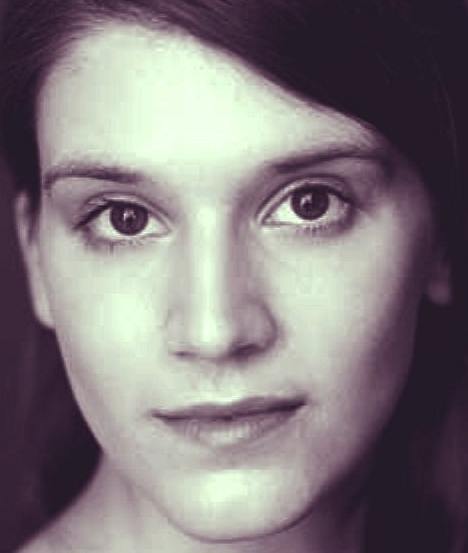
|

|
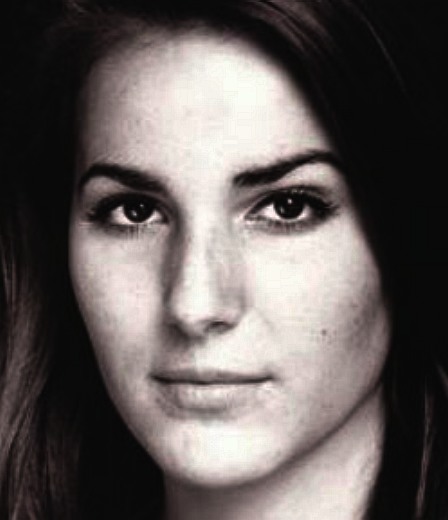
|

|
|
Mariam
Bell |
Camina
Bernhardt |
Fran
Binefa |
Carly
Jukes |
|

|
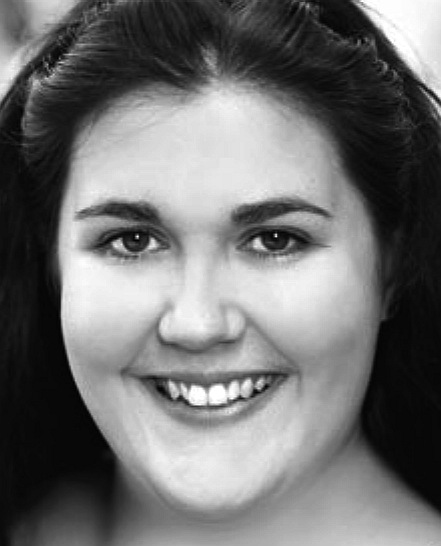
|
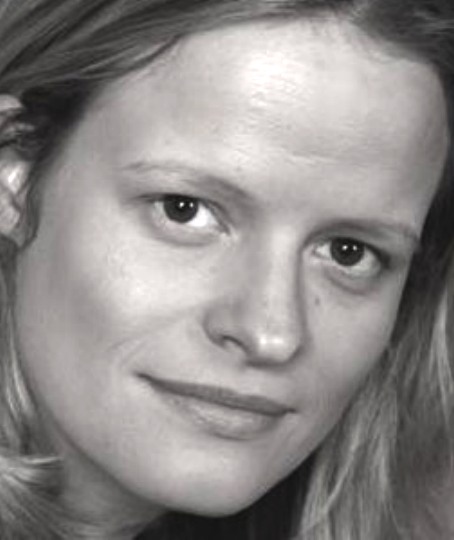
|

|
|
Ashlea
Kaye |
Kay Leigh
McDonald |
Henri
Merriam |
Leila
Sykes |
William Shakespeare
(baptised 26 April 1564) was an English poet and playwright, widely regarded as the greatest writer in the English language and the world's pre-eminent
dramatist. He is often called England's national poet and the "Bard of
Avon". His surviving works, including some collaborations, consist of about 38
plays, 154 sonnets, two long narrative poems, and several other poems. His plays have been translated into every major living language and are performed more often than those of any other
playwright.
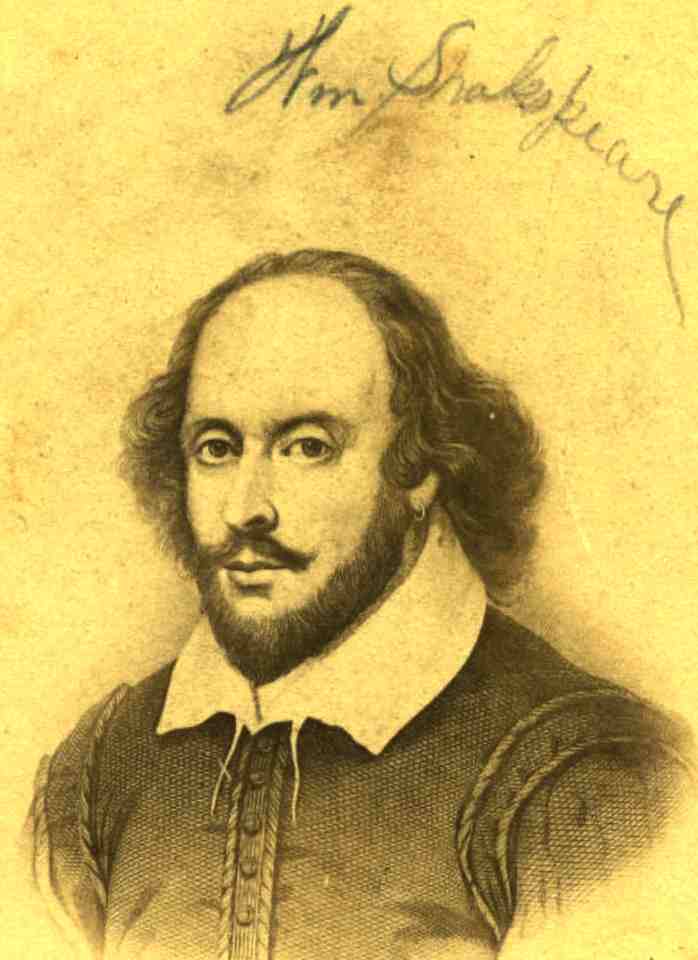
William
Shakespeare
Shakespeare was born and brought up in Stratford-upon-Avon. At the age of 18, he married Anne Hathaway, with whom he had three children: Susanna, and twins Hamnet and Judith. Between 1585 and 1592, he began a successful career in London as an actor, writer, and part owner of a playing company called the Lord Chamberlain's Men, later known as the King's Men. He appears to have retired to Stratford around 1613 at age 49, where he died three years later. Few records of Shakespeare's private life survive, and there has been considerable speculation about such matters as his physical appearance, sexuality, religious beliefs, and whether the works attributed to him were written by
others.
Shakespeare produced most of his known work between 1589 and 1613. His early plays were mainly comedies and histories, genres he raised to the peak of sophistication and artistry by the end of the 16th century. He then wrote mainly tragedies until about 1608, including
Hamlet, King Lear,
Othello, and
Macbeth, considered some of the finest works in the English language. In his last phase, he wrote tragicomedies, also known as romances, and collaborated with other playwrights.
Many of his plays were published in editions of varying quality and accuracy during his lifetime. In 1623, two of his former theatrical colleagues published the First Folio, a collected edition of his dramatic works that included all but two of the plays now recognised as Shakespeare's.

William
Shakespeare's portrait
Shakespeare was a respected poet and playwright in his own day, but his reputation did not rise to its present heights until the 19th century. The Romantics, in particular, acclaimed Shakespeare's genius, and the Victorians worshipped Shakespeare with a reverence that George Bernard Shaw called "bardolatry". In the 20th century, his work was repeatedly adopted and rediscovered by new movements in scholarship and performance. His plays remain highly popular today and are constantly studied, performed, and reinterpreted in diverse cultural and political contexts throughout the world.
Shakespeare's life -
Early life
William Shakespeare was the son of John Shakespeare, an alderman and a successful glover originally from Snitterfield, and Mary Arden, the daughter of an affluent landowning
farmer. He was born in Stratford-upon-Avon and baptised there on 26 April 1564. His actual
birth date remains unknown, but is traditionally observed on 23 April, St George's
Day This date, which can be traced back to an 18th-century scholar's mistake, has proved appealing to biographers, since Shakespeare died 23
April
1616. He was the third child of eight and the eldest surviving
son.
Although no attendance records for the period survive, most biographers agree that Shakespeare was probably educated at the King's New School in
Stratford, a free school chartered in 1553, about a quarter-mile from his home. Grammar schools varied in quality during the Elizabethan era, but the grammar curriculum was standardised by royal decree throughout
England, and the school would have provided an intensive education in Latin grammar and the
classics.
John Shakespeare's house, believed to be Shakespeare's birthplace, in Stratford-upon-Avon.At the age of 18, Shakespeare married the 26-year-old Anne Hathaway. The consistory court of the Diocese of Worcester issued a marriage licence 27 November 1582. The next day two of Hathaway's neighbours posted bonds guaranteeing that no lawful claims impeded the
marriage. The ceremony may have been arranged in some haste, since the Worcester chancellor allowed the marriage banns to be read once instead of the usual three
times, and six months after the marriage Anne gave birth to a daughter, Susanna, baptised 26 May
1583. Twins, son Hamnet and daughter Judith, followed almost two years later and were baptised 2 February
1585. Hamnet died of unknown causes at the age of 11 and was buried 11 August
1596.
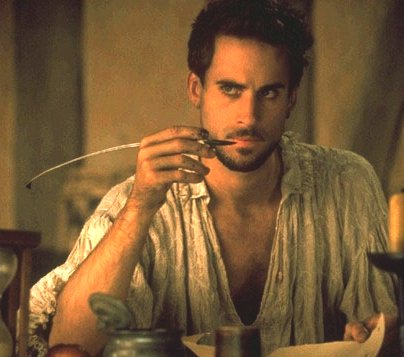 |
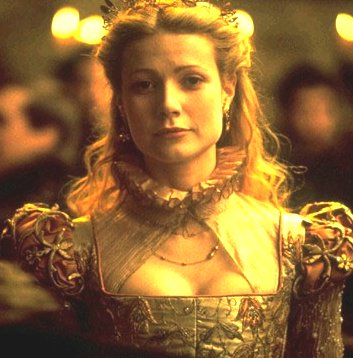 |
|
Shakespeare in Love, from the movie - inspiration |
Shakespeare in Love - who can blame him |
After the birth of the twins, Shakespeare left few historical traces until he is mentioned as part of the London theatre scene in 1592, and scholars refer to the years between 1585 and 1592 as Shakespeare's "lost
years". Biographers attempting to account for this period have reported many apocryphal stories. Nicholas Rowe, Shakespeare’s first biographer, recounted a Stratford legend that Shakespeare fled the town for London to escape prosecution for deer poaching in the estate of local squire Thomas Lucy. Shakespeare is also supposed to have taken his revenge on Lucy by writing a scurrilous ballad about
him. Another 18th-century story has Shakespeare starting his theatrical career minding the horses of theatre patrons in
London. John Aubrey reported that Shakespeare had been a country
schoolmaster. Some 20th-century scholars have suggested that Shakespeare may have been employed as a schoolmaster by Alexander Hoghton of Lancashire, a Catholic landowner who named a certain "William Shakeshafte" in his
will. No evidence substantiates such stories other than hearsay collected after his death, and Shakeshafte was a common name in the Lancashire
area.
London and theatrical career
"All the world's a stage,
and all the men and women merely players:
they have their exits and their entrances;
and one man in his time plays many parts..."
—As You Like It, Act II, Scene 7, 139–42
It is not known exactly when Shakespeare began writing, but contemporary allusions and records of performances show that several of his plays were on the London stage by
1592. He was well enough known in London by then to be attacked in print by the playwright Robert Greene in his Groats-Worth of Wit:
...there is an upstart Crow, beautified with our feathers, that with his Tiger's heart wrapped in a Player's hide, supposes he is as well able to bombast out a blank verse as the best of you: and being an absolute Johannes factotum, is in his own conceit the only Shake-scene in a
country.
Scholars differ on the exact meaning of these words, but most agree that Greene is accusing Shakespeare of reaching above his rank in trying to match university-educated writers such as Christopher Marlowe, Thomas Nashe and Greene himself (the "university
wits"). The italicised phrase parodying the line "Oh, tiger's heart wrapped in a woman's hide" from Shakespeare's Henry VI, Part 3, along with the pun "Shake-scene", identifies Shakespeare as Greene's target. Here Johannes Factotum—"Jack of all trades"— means a second-rate tinkerer with the work of others, rather than the more common "universal
genius".
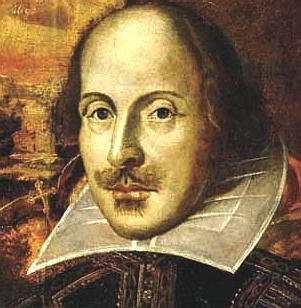
William
Shakespeare, as he is portrayed on many of his works
Greene's attack is the earliest surviving mention of Shakespeare’s career in the theatre. Biographers suggest that his career may have begun any time from the mid-1580s to just before Greene's
remarks. From 1594, Shakespeare's plays were performed only by the Lord Chamberlain's Men, a company owned by a group of players, including Shakespeare, that soon became the leading playing company in
London. After the death of Queen Elizabeth in 1603, the company was awarded a royal patent by the new king, James I, and changed its name to the King's
Men.
In 1599, a partnership of company members built their own theatre on the south bank of the River Thames, which they called the Globe. In 1608, the partnership also took over the Blackfriars indoor theatre. Records of Shakespeare's property purchases and investments indicate that the company made him a wealthy
man. In 1597, he bought the second-largest house in Stratford, New Place, and in 1605, he invested in a share of the parish tithes in
Stratford.
Some of Shakespeare's plays were published in quarto editions from 1594. By 1598, his name had become a selling point and began to appear on the title
pages. Shakespeare continued to act in his own and other plays after his success as a playwright. The 1616 edition of Ben Jonson's Works names him on the cast lists for Every Man in His Humour (1598) and Sejanus His Fall
(1603). The absence of his name from the 1605 cast list for Jonson’s Volpone is taken by some scholars as a sign that his acting career was nearing its
end. The First Folio of 1623, however, lists Shakespeare as one of "the Principal Actors in all these Plays", some of which were first staged after Volpone, although we cannot know for certain which roles he
played. In 1610, John Davies of Hereford wrote that "good Will" played "kingly"
roles. In 1709, Rowe passed down a tradition that Shakespeare played the ghost of Hamlet's
father. Later traditions maintain that he also played Adam in As You Like It and the Chorus in Henry
V, though scholars doubt the sources of the
information.
Shakespeare divided his time between London and Stratford during his career. In 1596, the year before he bought New Place as his family home in Stratford, Shakespeare was living in the parish of St. Helen's, Bishopsgate, north of the River
Thames. He moved across the river to Southwark by 1599, the year his company constructed the Globe Theatre
there. By 1604, he had moved north of the river again, to an area north of St Paul's Cathedral with many fine houses. There he rented rooms from a French Huguenot called Christopher Mountjoy, a maker of ladies' wigs and other
headgear.
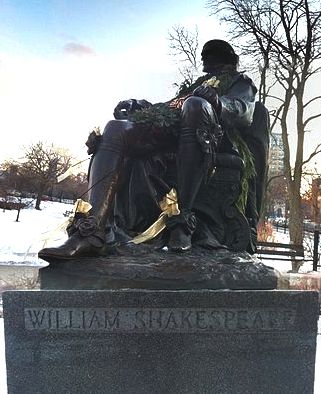
William
Shakespeare - statue in Lincoln Park
Later years and death
Rowe was the first biographer to pass down the tradition that Shakespeare retired to Stratford some years before his
death; but retirement from all work was uncommon at that time, and Shakespeare continued to visit
London. In 1612 he was called as a witness in a court case concerning the marriage settlement of Mountjoy's daughter,
Mary. In March 1613 he bought a gatehouse in the former Blackfriars
priory; and from November 1614 he was in London for several weeks with his son-in-law, John
Hall.
After 1606–1607, Shakespeare wrote fewer plays, and none are attributed to him after
1613. His last three plays were collaborations, probably with John
Fletcher, who succeeded him as the house playwright for the King’s
Men.
Shakespeare died on 23 April 1616 and was survived by his wife and two daughters. Susanna had married a physician, John Hall, in
1607, and Judith had married Thomas Quiney, a vintner, two months before Shakespeare’s
death.
In his will, Shakespeare left the bulk of his large estate to his elder daughter
Susanna. The terms instructed that she pass it down intact to "the first son of her
body". The Quineys had three children, all of whom died without
marrying. The Halls had one child, Elizabeth, who married twice but died without children in 1670, ending Shakespeare’s direct
line. Shakespeare's will scarcely mentions his wife, Anne, who was probably entitled to one third of his estate
automatically. He did make a point, however, of leaving her "my second best bed", a bequest that has led to much
speculation. Some scholars see the bequest as an insult to Anne, whereas others believe that the second-best bed would have been the matrimonial bed and therefore rich in
significance.
Shakespeare was buried in the chancel of the Holy Trinity Church two days after his
death. The epitaph carved into the stone slab covering his grave includes a curse against moving his bones, which was carefully avoided during restoration of the church in
2008 - See foot of page.
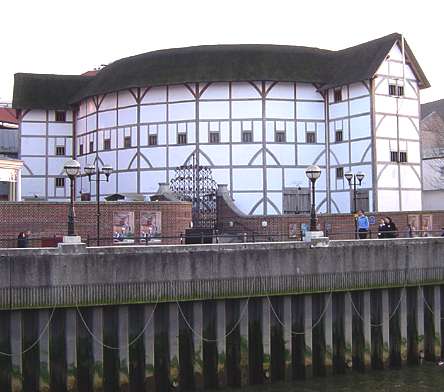
The
Globe Theatre reconstruction in London
Sometime before 1623, a funerary monument was erected in his memory on the north wall, with a half-effigy of him in the act of writing. Its plaque compares him to Nestor, Socrates, and
Virgil. In 1623, in conjunction with the publication of the First Folio, the Droeshout engraving was
published.
Shakespeare has been commemorated in many statues and memorials around the world, including funeral monuments in Southwark Cathedral and Poets' Corner in Westminster Abbey.
Shakespeare's plays and Shakespeare's collaborations
Most playwrights of the period typically collaborated with others at some point, and critics agree that Shakespeare did the same, mostly early and late in his
career. Some attributions, such as Titus Andronicus and the early history plays, remain controversial, while The Two Noble Kinsmen and the lost Cardenio have well-attested contemporary documentation. Textual evidence also supports the view that several of the plays were revised by other writers after their original composition.
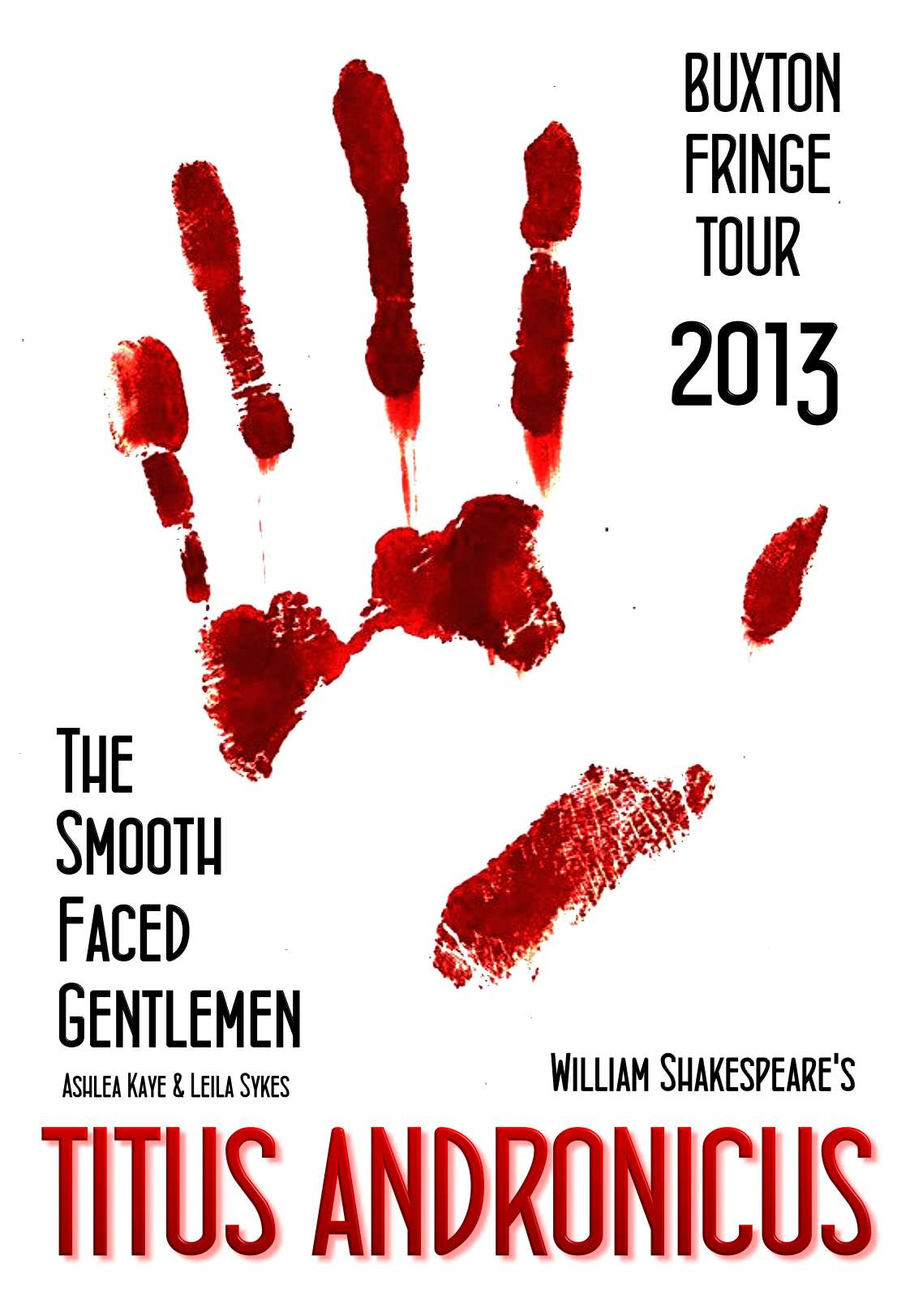
The first recorded works of Shakespeare are Richard III and the three parts of Henry VI, written in the early 1590s during a vogue for historical drama. Shakespeare's plays are difficult to date,
however, and studies of the texts suggest that Titus Andronicus, The Comedy of Errors, The Taming of the Shrew and The Two Gentlemen of Verona may also belong to Shakespeare’s earliest
period. His first histories, which draw heavily on the 1587 edition of Raphael Holinshed's Chronicles of England, Scotland, and
Ireland, dramatise the destructive results of weak or corrupt rule and have been interpreted as a justification for the origins of the Tudor
dynasty.
The early plays were influenced by the works of other Elizabethan dramatists, especially Thomas Kyd and Christopher Marlowe, by the traditions of medieval drama, and by the plays of
Seneca. The Comedy of Errors was also based on classical models, but no source for The Taming of the Shrew has been found, though it is related to a separate play of the same name and may have derived from a folk
story. Like The Two Gentlemen of Verona, in which two friends appear to approve of
rape, the Shrew's story of the taming of a woman's independent spirit by a man sometimes troubles modern critics and
directors.
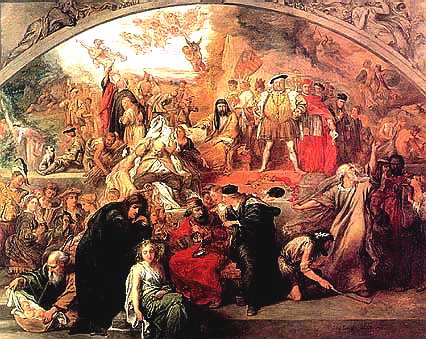
The
Plays of William
Shakespeare, painting by Sir John Gilbert 1848
Shakespeare's early classical and Italianate comedies, containing tight double plots and precise comic sequences, give way in the mid-1590s to the romantic atmosphere of his greatest
comedies. A Midsummer Night's Dream is a witty mixture of romance, fairy magic, and comic lowlife
scenes. Shakespeare's next comedy, the equally romantic Merchant of Venice, contains a portrayal of the vengeful Jewish moneylender Shylock, which reflects Elizabethan views but may appear derogatory to modern
audiences. The wit and wordplay of Much Ado About Nothing, the charming rural setting of As You Like It, and the lively merrymaking of Twelfth Night complete Shakespeare's sequence of great
comedies.
After the lyrical Richard II, written almost entirely in verse, Shakespeare introduced prose comedy into the histories of the late 1590s, Henry IV, parts 1 and 2, and Henry V. His characters become more complex and tender as he switches deftly between comic and serious scenes, prose and poetry, and achieves the narrative variety of his mature
work. This period begins and ends with two tragedies: Romeo and Juliet, the famous romantic tragedy of sexually charged adolescence, love, and
death; and Julius Caesar—based on Sir Thomas North's 1579 translation of Plutarch's Parallel Lives—which introduced a new kind of
drama. According to Shakespearean scholar James Shapiro, in Julius Caesar "the various strands of politics, character, inwardness, contemporary events, even Shakespeare's own reflections on the act of writing, began to infuse each
other".
Hamlet, Horatio, Marcellus, and the Ghost of Hamlet's Father. Henry Fuseli, 1780–5. Kunsthaus Zürich.In the early 17th century, Shakespeare wrote the so-called "problem plays" Measure for Measure, Troilus and Cressida, and All's Well That Ends Well and a number of his best known
tragedies. Many critics believe that Shakespeare's greatest tragedies represent the peak of his art. The titular hero of one of Shakespeare's most famous tragedies, Hamlet, has probably been discussed more than any other Shakespearean character, especially for his famous soliloquy "To be or not to be; that is the
question". Unlike the introverted Hamlet, whose fatal flaw is hesitation, the heroes of the tragedies that followed, Othello and King Lear, are undone by hasty errors of
judgement.
The plots of Shakespeare's tragedies often hinge on such fatal errors or flaws, which overturn order and destroy the hero and those he
loves. In Othello, the villain Iago stokes Othello's sexual jealousy to the point where he murders the innocent wife who loves
him. In King Lear, the old king commits the tragic error of giving up his powers, initiating the events which lead to the torture and blinding of the Earl of Gloucester and the murder of Lear's youngest daughter Cordelia. According to the critic Frank Kermode, "the play offers neither its good characters nor its audience any relief from its
cruelty". In Macbeth, the shortest and most compressed of Shakespeare's
tragedies, uncontrollable ambition incites Macbeth and his wife, Lady Macbeth, to murder the rightful king and usurp the throne, until their own guilt destroys them in
turn. In this play, Shakespeare adds a supernatural element to the tragic structure. His last major tragedies, Antony and Cleopatra and Coriolanus, contain some of Shakespeare's finest poetry and were considered his most successful tragedies by the poet and critic T. S.
Eliot.
In his final period, Shakespeare turned to romance or tragicomedy and completed three more major plays: Cymbeline, The Winter's Tale and The Tempest, as well as the collaboration, Pericles, Prince of Tyre. Less bleak than the tragedies, these four plays are graver in tone than the comedies of the 1590s, but they end with reconciliation and the forgiveness of potentially tragic
errors. Some commentators have seen this change in mood as evidence of a more serene view of life on Shakespeare's part, but it may merely reflect the theatrical fashion of the
day. Shakespeare collaborated on two further surviving plays, Henry VIII and The Two Noble Kinsmen, probably with John
Fletcher.
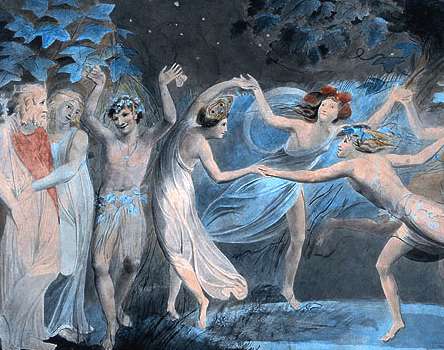
Oberon, Titania and Puck with Fairies Dancing
By William Blake, c. 1786. Tate Britain
Shakespeare in performance
It is not clear for which companies Shakespeare wrote his early plays. The title page of the 1594 edition of Titus Andronicus reveals that the play had been acted by three different
troupes. After the plagues of 1592–3, Shakespeare's plays were performed by his own company at The Theatre and the Curtain in Shoreditch, north of the
Thames. Londoners flocked there to see the first part of Henry IV, Leonard Digges recording, "Let but Falstaff come, Hal, Poins, the rest...and you scarce shall have a
room". When the company found themselves in dispute with their landlord, they pulled The Theatre down and used the timbers to construct the Globe Theatre, the first playhouse built by actors for actors, on the south bank of the Thames at
Southwark. The Globe opened in autumn 1599, with Julius Caesar one of the first plays staged. Most of Shakespeare's greatest post-1599 plays were written for the Globe, including Hamlet, Othello and King
Lear.
After the Lord Chamberlain's Men were renamed the King's Men in 1603, they entered a special relationship with the new King James. Although the performance records are patchy, the King's Men performed seven of Shakespeare's plays at court between 1 November 1604 and 31 October 1605, including two performances of The Merchant of
Venice. After 1608, they performed at the indoor Blackfriars Theatre during the winter and the Globe during the
summer. The indoor setting, combined with the Jacobean fashion for lavishly staged masques, allowed Shakespeare to introduce more elaborate stage devices. In Cymbeline, for example, Jupiter descends "in thunder and lightning, sitting upon an eagle: he throws a thunderbolt. The ghosts fall on their
knees."
The actors in Shakespeare's company included the famous Richard Burbage, William Kempe, Henry Condell and John Heminges. Burbage played the leading role in the first performances of many of Shakespeare's plays, including Richard III, Hamlet, Othello, and King
Lear. The popular comic actor Will Kempe played the servant Peter in Romeo and Juliet and Dogberry in Much Ado About Nothing, among other
characters. He was replaced around the turn of the 16th century by Robert Armin, who played roles such as Touchstone in As You Like It and the fool in King
Lear. In 1613, Sir Henry Wotton recorded that Henry VIII "was set forth with many extraordinary circumstances of pomp and
ceremony". On 29 June, however, a cannon set fire to the thatch of the Globe and burned the theatre to the ground, an event which pinpoints the date of a Shakespeare play with rare
precision.
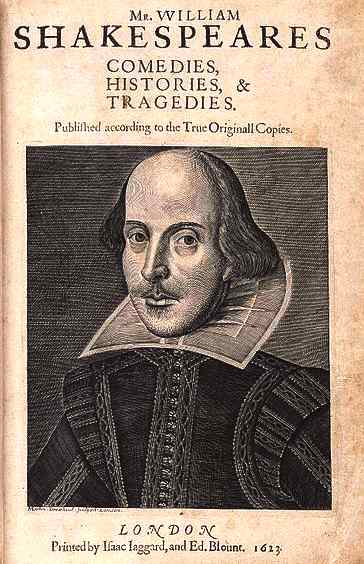
Title page of the First Folio, 1623
Copper engraving of Shakespeare by Martin Droeshout
Textual sources
John Heminges and Henry Condell, two of Shakespeare's friends from the King's Men, published the First Folio, a collected edition of Shakespeare's plays. It contained 36 texts, including 18 printed for the first
time. Many of the plays had already appeared in quarto versions—flimsy books made from sheets of paper folded twice to make four
leaves. No evidence suggests that Shakespeare approved these editions, which the First Folio describes as "stol'n and surreptitious
copies". Alfred Pollard termed some of them "bad quartos" because of their adapted, paraphrased or garbled texts, which may in places have been reconstructed from
memory. Where several versions of a play survive, each differs from the other. The differences may stem from copying or printing errors, from notes by actors or audience members, or from Shakespeare's own
papers. In some cases, for example Hamlet, Troilus and Cressida and Othello, Shakespeare could have revised the texts between the quarto and folio editions. In the case of King Lear, however, while most modern additions do conflate them, the 1623 folio version is so different from the 1608 quarto, that the Oxford Shakespeare prints them both, arguing that they cannot be conflated without
confusion.
Poems
In 1593 and 1594, when the theatres were closed because of plague, Shakespeare published two narrative poems on erotic themes, Venus and Adonis and The Rape of Lucrece. He dedicated them to Henry Wriothesley, Earl of Southampton. In Venus and Adonis, an innocent Adonis rejects the sexual advances of Venus; while in The Rape of Lucrece, the virtuous wife Lucrece is raped by the lustful
Tarquin. Influenced by Ovid's Metamorphoses, the poems show the guilt and moral confusion that result from uncontrolled
lust. Both proved popular and were often reprinted during Shakespeare's lifetime. A third narrative poem, A Lover's Complaint, in which a young woman laments her seduction by a persuasive suitor, was printed in the first edition of the Sonnets in 1609. Most scholars now accept that Shakespeare wrote A Lover's Complaint. Critics consider that its fine qualities are marred by leaden
effects. The Phoenix and the Turtle, printed in Robert Chester's 1601 Love's Martyr, mourns the deaths of the legendary phoenix and his lover, the faithful turtle dove. In 1599, two early drafts of sonnets 138 and 144 appeared in The Passionate Pilgrim, published under Shakespeare's name but without his
permission.
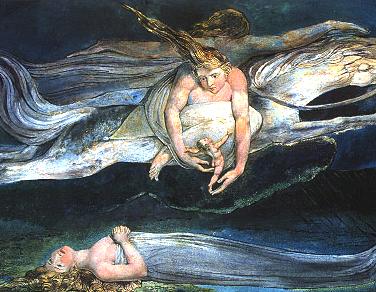
Pity,
by William Blake 1795
Shakespeare's sonnets
Published in 1609, the Sonnets were the last of Shakespeare's non-dramatic works to be printed. Scholars are not certain when each of the 154 sonnets was composed, but evidence suggests that Shakespeare wrote sonnets throughout his career for a private
readership. Even before the two unauthorised sonnets appeared in The Passionate Pilgrim in 1599, Francis Meres had referred in 1598 to Shakespeare's "sugred Sonnets among his private
friends". Few analysts believe that the published collection follows Shakespeare's intended
sequence. He seems to have planned two contrasting series: one about uncontrollable lust for a married woman of dark complexion (the "dark lady"), and one about conflicted love for a fair young man (the "fair youth"). It remains unclear if these figures represent real individuals, or if the authorial "I" who addresses them represents Shakespeare himself, though Wordsworth believed that with the sonnets "Shakespeare unlocked his
heart".
"Shall I compare thee to a summer's day?
Thou art more lovely and more temperate..."
—Lines from Shakespeare's Sonnet 18.The 1609 edition was dedicated to a "Mr. W.H.", credited as "the only begetter" of the poems. It is not known whether this was written by Shakespeare himself or by the publisher, Thomas Thorpe, whose initials appear at the foot of the dedication page; nor is it known who Mr. W.H. was, despite numerous theories, or whether Shakespeare even authorised the
publication. Critics praise the Sonnets as a profound meditation on the nature of love, sexual passion, procreation, death, and
time.
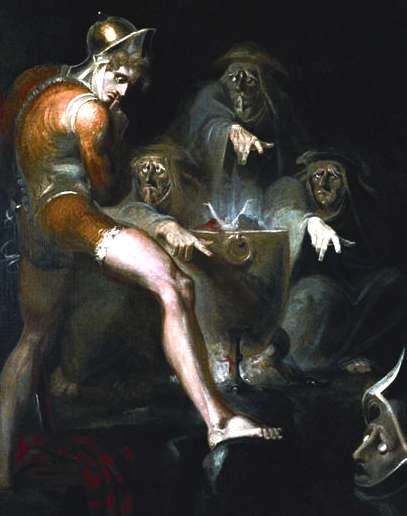
Macbeth Consulting the Vision of the Armed Head Painting
by Henry Fuseli, 1793–94
Shakespeare's style
Shakespeare's first plays were written in the conventional style of the day. He wrote them in a stylised language that does not always spring naturally from the needs of the characters or the
drama. The poetry depends on extended, sometimes elaborate metaphors and conceits, and the language is often rhetorical—written for actors to declaim rather than speak. The grand speeches in Titus Andronicus, in the view of some critics, often hold up the action, for example; and the verse in The Two Gentlemen of Verona has been described as
stilted.
Soon, however, Shakespeare began to adapt the traditional styles to his own purposes. The opening soliloquy of Richard III has its roots in the self-declaration of Vice in medieval drama. At the same time, Richard’s vivid self-awareness looks forward to the soliloquies of Shakespeare's mature
plays. No single play marks a change from the traditional to the freer style. Shakespeare combined the two throughout his career, with Romeo and Juliet perhaps the best example of the mixing of the
styles. By the time of Romeo and Juliet, Richard II, and A Midsummer Night's
Dream in the mid-1590s, Shakespeare had begun to write a more natural poetry. He increasingly tuned his metaphors and images to the needs of the drama itself.
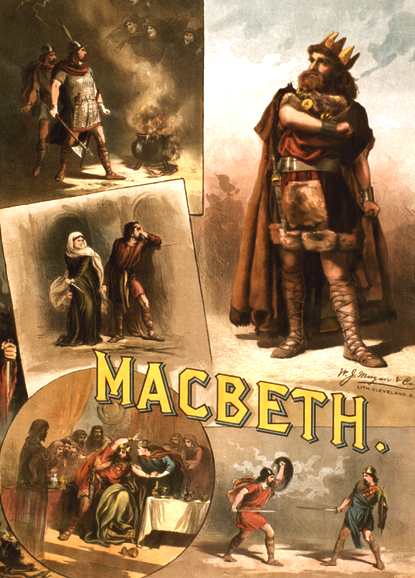
William
Shakespeare's Macbeth 1884
Pity by William Blake (above), 1795, Tate Britain, is an illustration of two similes in Macbeth: "And pity, like a naked new-born babe, / Striding the blast, or heaven's cherubim, hors'd / Upon the sightless couriers of the
air". Shakespeare's standard poetic form was blank verse, composed in iambic pentameter. In practice, this meant that his verse was usually unrhymed and consisted of ten syllables to a line, spoken with a stress on every second syllable. The blank verse of his early plays is quite different from that of his later ones. It is often beautiful, but its sentences tend to start, pause, and finish at the end of lines, with the risk of
monotony. Once Shakespeare mastered traditional blank verse, he began to interrupt and vary its flow. This technique releases the new power and flexibility of the poetry in plays such as Julius Caesar and Hamlet. Shakespeare uses it, for example, to convey the turmoil in Hamlet's
mind:
Sir, in my heart there was a kind of fighting
That would not let me sleep. Methought I lay
Worse than the mutines in the bilboes. Rashly—
And prais'd be rashness for it—let us know
Our indiscretion sometimes serves us well...
Hamlet, Act 5, Scene 2, 4–8
After Hamlet, Shakespeare varied his poetic style further, particularly in the more emotional passages of the late tragedies. The literary critic A. C. Bradley described this style as "more concentrated, rapid, varied, and, in construction, less regular, not seldom twisted or
elliptical". In the last phase of his career, Shakespeare adopted many techniques to achieve these effects. These included run-on lines, irregular pauses and stops, and extreme variations in sentence structure and
length. In Macbeth, for example, the language darts from one unrelated metaphor or simile to another: "was the hope drunk/ Wherein you dressed yourself?" (1.7.35–38); "...pity, like a naked new-born babe/ Striding the blast, or heaven's cherubim, hors'd/ Upon the sightless couriers of the air..." (1.7.21–25). The listener is challenged to complete the
sense. The late romances, with their shifts in time and surprising turns of plot, inspired a last poetic style in which long and short sentences are set against one another, clauses are piled up, subject and object are reversed, and words are omitted, creating an effect of
spontaneity.
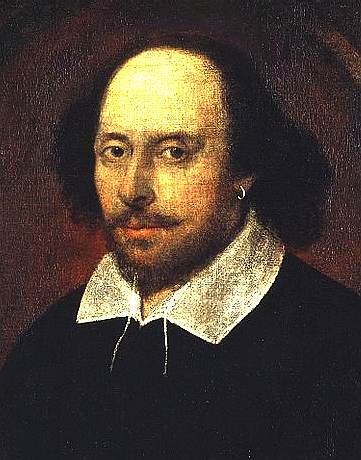
William
Shakespeare - portrait by Chandos
Shakespeare combined poetic genius with a practical sense of the
theatre. Like all playwrights of the time, he dramatised stories from sources such as Plutarch and
Holinshed. He reshaped each plot to create several centres of interest and to show as many sides of a narrative to the audience as possible. This strength of design ensures that a Shakespeare play can survive translation, cutting and wide interpretation without loss to its core
drama. As Shakespeare’s mastery grew, he gave his characters clearer and more varied motivations and distinctive patterns of speech. He preserved aspects of his earlier style in the later plays, however. In Shakespeare's late romances, he deliberately returned to a more artificial style, which emphasised the illusion of
theatre.
Shakespeare's influence
Folger Shakespeare Library, Washington.Shakespeare's work has made a lasting impression on later theatre and literature. In particular, he expanded the dramatic potential of characterisation, plot, language, and
genre. Until Romeo and Juliet, for example, romance had not been viewed as a worthy topic for
tragedy. Soliloquies had been used mainly to convey information about characters or events; but Shakespeare used them to explore characters'
minds. His work heavily influenced later poetry. The Romantic poets attempted to revive Shakespearean verse drama, though with little success. Critic George Steiner described all English verse dramas from Coleridge to Tennyson as "feeble variations on Shakespearean
themes."
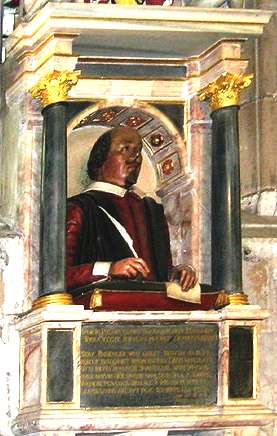
William
Shakespeare's funerary monument in Stratford-upon-Avon
Shakespeare influenced novelists such as Thomas Hardy, William Faulkner, and Charles Dickens. The
American novelist Herman Melville's soliloquies owe much to Shakespeare; his Captain Ahab in Moby-Dick is a classic tragic hero, inspired by King
Lear. Scholars have identified 20,000 pieces of music linked to Shakespeare's works. These include two operas by Giuseppe Verdi, Otello and Falstaff, whose critical standing compares with that of the source
plays. Shakespeare has also inspired many painters, including the Romantics and the Pre-Raphaelites. The Swiss Romantic artist Henry Fuseli, a friend of William Blake, even translated Macbeth into
German. The psychoanalyst Sigmund Freud drew on Shakespearean psychology, in particular that of Hamlet, for his theories of human
nature.
In Shakespeare's day, English grammar, spelling and pronunciation were less standardised than they are
now, and his use of language helped shape modern English. Samuel Johnson quoted him more often than any other author in his A Dictionary of the English Language, the first serious work of its
type. Expressions such as "with bated breath" (Merchant of Venice) and "a foregone conclusion" (Othello) have found their way into everyday English
speech.
Critical reputation
"He was not of an age, but for all time."
—Ben Jonson
Shakespeare was not revered in his lifetime, but he received his share of
praise. In 1598, the cleric and author Francis Meres singled him out from a group of
English writers as "the most excellent" in both comedy and
tragedy. And the authors of the Parnassus plays at St John's College, Cambridge, numbered him with Chaucer, Gower and
Spenser. In the First Folio, Ben Jonson called Shakespeare the "Soul of the age, the applause, delight, the wonder of our stage", though he had remarked elsewhere that "Shakespeare wanted art".
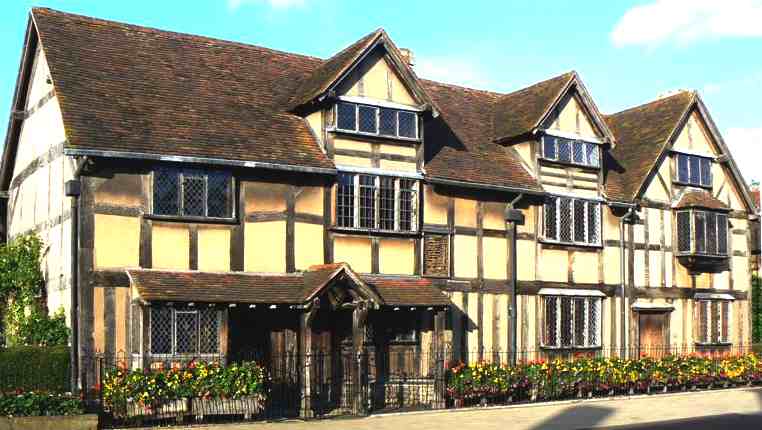
William
Shakespeare's birthplace at Stratford upon Avon
A recently garlanded statue of William Shakespeare in Lincoln Park, Chicago, typical of many created in the 19th and early 20th century.Between the Restoration of the monarchy in 1660 and the end of the 17th century, classical ideas were in vogue. As a result, critics of the time mostly rated Shakespeare below John Fletcher and Ben
Jonson. Thomas Rymer, for example, condemned Shakespeare for mixing the comic with the tragic. Nevertheless, poet and critic John Dryden rated Shakespeare highly, saying of Jonson, "I admire him, but I love
Shakespeare". For several decades, Rymer's view held sway; but during the 18th century, critics began to respond to Shakespeare on his own terms and acclaim what they termed his natural genius. A series of scholarly editions of his work, notably those of Samuel Johnson in 1765 and Edmond Malone in 1790, added to his growing
reputation. By 1800, he was firmly enshrined as the national poet. In the 18th and 19th centuries, his reputation also spread abroad. Among those who championed him were the writers Voltaire, Goethe, Stendhal and Victor
Hugo.
During the Romantic era, Shakespeare was praised by the poet and literary philosopher Samuel Taylor Coleridge; and the critic August Wilhelm Schlegel translated his plays in the spirit of German
Romanticism. In the 19th century, critical admiration for Shakespeare's genius often bordered on
adulation. "That King Shakespeare," the essayist Thomas Carlyle wrote in 1840, "does not he shine, in crowned sovereignty, over us all, as the noblest, gentlest, yet strongest of rallying signs;
indestructible". The Victorians produced his plays as lavish spectacles on a grand
scale. The playwright and critic George Bernard Shaw mocked the cult of Shakespeare worship as "bardolatry". He claimed that the new naturalism of Ibsen's plays had made Shakespeare
obsolete.
The modernist revolution in the arts during the early 20th century, far from discarding Shakespeare, eagerly enlisted his work in the service of the avant-garde. The Expressionists in Germany and the Futurists in Moscow mounted productions of his plays. Marxist playwright and director Bertolt Brecht devised an epic theatre under the influence of Shakespeare. The poet and critic T. S. Eliot argued against Shaw that Shakespeare's "primitiveness" in fact made him truly
modern. Eliot, along with G. Wilson Knight and the school of New Criticism, led a movement towards a closer reading of Shakespeare's imagery. In the 1950s, a wave of new critical approaches replaced modernism and paved the way for "post-modern" studies of
Shakespeare. By the eighties, Shakespeare studies were open to movements such as structuralism, feminism, New Historicism, African American studies, and queer
studies.
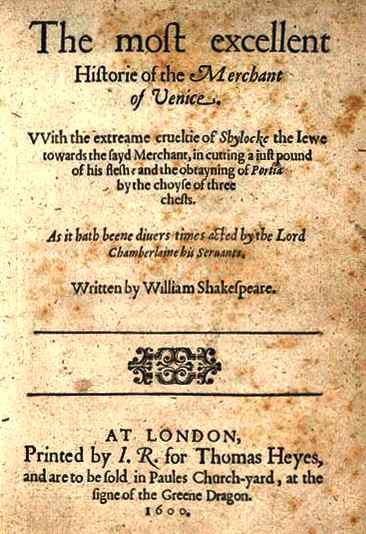
William
Shakespeare's Merchant of Venice 1600
Speculation about Shakespeare Authorship
Around 150 years after Shakespeare's death, doubts began to be expressed about the authorship of the works attributed to
him. Proposed alternative candidates include Francis Bacon, Christopher Marlowe, and Edward de Vere, 17th Earl of
Oxford. Several "group theories" have also been
proposed. Only a small minority of academics believe there is reason to question the traditional
attribution, but interest in the subject, particularly the Oxfordian theory of Shakespeare authorship, continues into the 21st
century.
William Shakespeare's religion
Some scholars claim that members of Shakespeare's family were Catholics, at a time when Catholic practice was against the
law. Shakespeare's mother, Mary Arden, certainly came from a pious Catholic family. The strongest evidence might be a Catholic statement of faith signed by John Shakespeare, found in 1757 in the rafters of his former house in Henley Street. The document is now lost, however, and scholars differ as to its
authenticity. In 1591 the authorities reported that John Shakespeare had missed church "for fear of process for debt", a common Catholic
excuse. In 1606 the name of William's daughter Susanna appears on a list of those who failed to attend Easter communion in
Stratford. Scholars find evidence both for and against Shakespeare's Catholicism in his plays, but the truth may be impossible to prove either
way.
Shakespeare
in Love, film trailer Youtube
Sexuality of William Shakespeare
Few details of Shakespeare's sexuality are known. At 18, he married the 26-year-old Anne Hathaway, who was pregnant. Susanna, the first of their three children, was born six months later on 26 May 1583. Over the centuries some readers have posited that Shakespeare's sonnets are
autobiographical, and point to them as evidence of his love for a young man. Others read the same passages as the expression of intense friendship rather than sexual
love. The 26 so-called "Dark Lady" sonnets, addressed to a married woman, are taken as evidence of heterosexual
liaisons.
Portraits of William Shakespeare
There is no written description of Shakespeare's physical appearance and no evidence that he ever commissioned a portrait, so the Droeshout engraving, which Ben Jonson approved of as a good
likeness, and his Stratford monument provide the best evidence of his appearance. From the 18th century, the desire for authentic Shakespeare portraits fuelled claims that various surviving pictures depicted Shakespeare. That demand also led to the production of several fake portraits, as well as misattributions,
re-paintings and re-labeling of portraits of other
people.
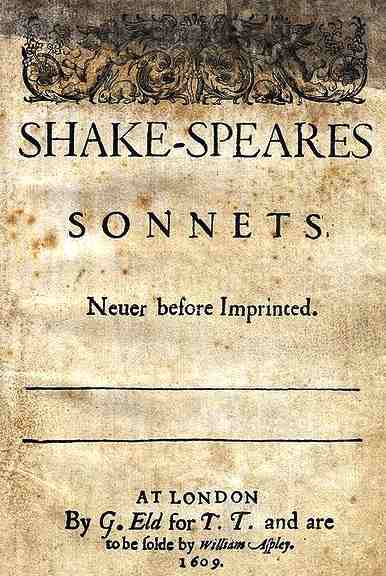
Title page from 1609 edition of Shake-Speares Sonnets
Classification of the plays
The Plays of William Shakespeare. By Sir John Gilbert, 1849.Shakespeare's works include the 36 plays printed in the First Folio of 1623, listed below according to their folio classification as comedies, histories and
tragedies. Two plays not included in the First Folio, The Two Noble Kinsmen and Pericles, Prince of Tyre, are now accepted as part of the canon, with scholars agreed that Shakespeare made a major contribution to their
composition. No Shakespearean poems were included in the First Folio.
In the late 19th century, Edward Dowden classified four of the late comedies as romances, and though many scholars prefer to call them tragicomedies, his term is often
used. These plays and the associated Two Noble Kinsmen are marked with an asterisk (*) below. In 1896, Frederick S. Boas coined the term "problem plays" to describe four plays: All's Well That Ends Well, Measure for Measure, Troilus and Cressida and
Hamlet. "Dramas as singular in theme and temper cannot be strictly called comedies or tragedies", he wrote. "We may therefore borrow a convenient phrase from the theatre of today and class them together as Shakespeare's problem
plays." The term, much debated and sometimes applied to other plays, remains in use, though Hamlet is definitively classed as a
tragedy. The other problem plays are marked below with a double dagger (‡).
Plays thought to be only partly written by Shakespeare are marked with a dagger (†) below. Other works occasionally attributed to him are listed as apocrypha.
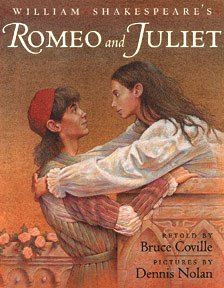 |
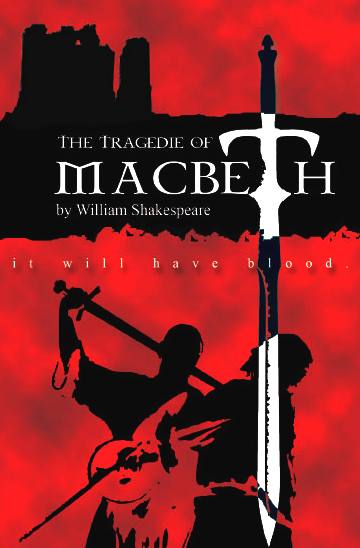 |
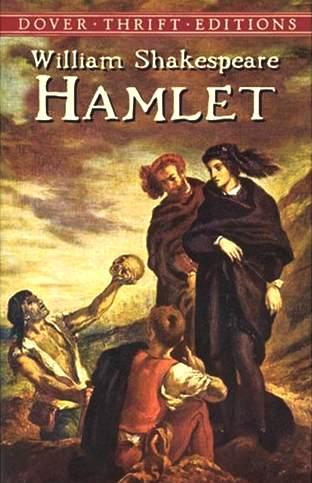 |
|
Romeo
& Juliet
|
Macbeth
|
Hamlet
|
Notes
Dates follow the Julian calendar, used in England throughout Shakespeare's lifespan, but with the start of year adjusted to 1 January (see Old Style and New Style dates). Under the Gregorian calendar, adopted in Catholic countries in 1582, Shakespeare died on 3 May (Schoenbaum 1987, xv).
The "national cult" of Shakespeare, and the "bard" identification, dates from September 1769, when the actor David Garrick organised a week-long carnival at Stratford to mark the town council awarding him the freedom of the town. In addition to presenting the town with a statue of Shakespeare, Garrick composed a doggerel verse, lampooned in the London newspapers, naming the banks of the Avon as the birthplace of the "matchless Bard" (McIntyre 1999, 412–432).
The Passionate Pilgrim, published under Shakespeare's name in 1599 without his permission, includes early versions of two of his sonnets, three extracts from Love's Labour's Lost, several poems known to be by other poets, and eleven poems of unknown authorship for which the attribution to Shakespeare has not been disproved (Wells et al. 2005, 805)
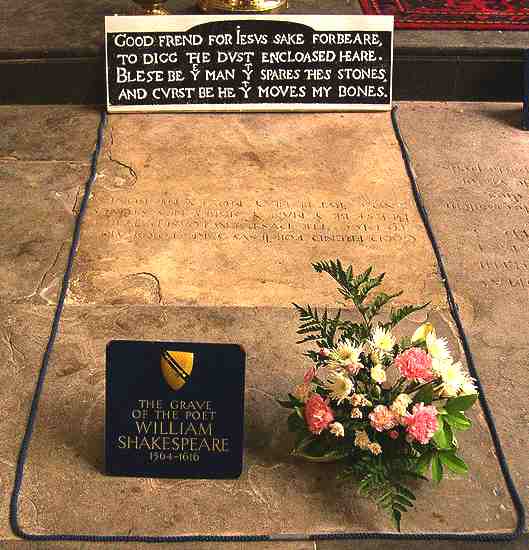
William
Shakespeare died on the 23rd of April 1616
Good frend for Iesvs sake forbeare,
To digg the dvst encloased heare.
Bleste be ye man yt spares thes stones,
And cvrst be he yt moves my bones.
(Modern spelling: Good friend, for Jesus' sake forbear, | To dig the dust enclosed here. | Blessed be the man that spares these stones, | And cursed be he that moves my bones.)
WORKS:
- Comedies
Shakespearean
comedy
|
- Histories
Shakespearean
history
- King
John
- Richard
II
- Henry
IV, Part 1
- Henry
IV, Part 2
- Henry
V
- Henry
VI, Part 1 †
- Henry
VI, Part 2
- Henry
VI, Part 3
- Richard
III
- Henry
VIII †
|
- Tragedies
Shakespearean
tragedy
|
- Poems
- Shakespeare's
sonnets
- Venus
and Adonis
- The
Rape of Lucrece
- The
Passionate Pilgrim
- The
Phoenix and the Turtle
- A
Lover's Complaint
|
- Lost plays
- Love's
Labour's Won
- The
History of Cardenio †
|
- Apocrypha
Shakespeare
Apocrypha
- Arden
of Faversham
- The
Birth of Merlin
- Edward
III
- Locrine
- The
London Prodigal
- The
Puritan
- The
Second Maiden's Tragedy
- Sir
John Oldcastle
- Thomas
Lord Cromwell
- A
Yorkshire Tragedy
- Sir
Thomas More
|
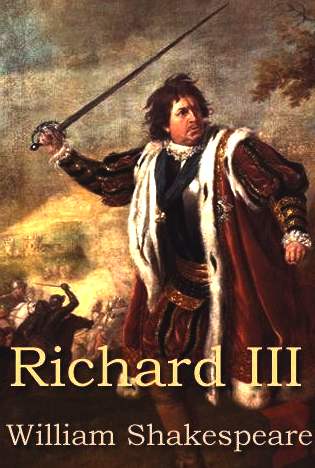 |
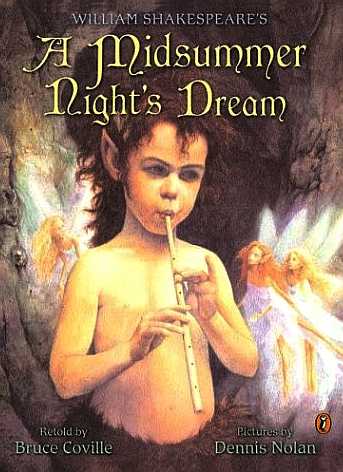 |
| Richard
the Third |
A
Midsummer Night's Dream |
ANTONY
AND CLEOPATRA
ACT
I
SCENE
I. Alexandria. A
room in CLEOPATRA's palace.
SCENE
II. The same. Another
room. Enter CHARMIAN, IRAS, ALEXAS, and a Soothsayer
SCENE
III. The same. Another
room. Enter CLEOPATRA, CHARMIAN, IRAS, and ALEXAS
SCENE
IV. Rome. OCTAVIUS CAESAR's house. Enter OCTAVIUS CAESAR, reading
a letter, LEPIDUS, and their Train
SCENE
V. Alexandria. CLEOPATRA's palace. Enter CLEOPATRA, CHARMIAN,
IRAS, and MARDIAN
ACT II
SCENE
I. Messina. POMPEY's house. Enter POMPEY,
MENECRATES, and MENAS, in warlike manner
SCENE
II. Rome. The house of LEPIDUS. Enter
DOMITIUS ENOBARBUS and LEPIDUS
SCENE
III. The same. OCTAVIUS CAESAR's house.
Enter MARK ANTONY, CAESAR,
OCTAVIA between them, and Attendants
SCENE
IV. Lepidus sets off to do battle with Pompey.
Urging Maecenas and Agrippa hasten departures of Antony and Caesar.
SCENE
V. Alexandria. CLEOPATRA's palace. Enter
CLEOPATRA, CHARMIAN, IRAS, and ALEXAS
SCENE
VI. Near Misenum. Enter Pompey, Menas drum/trumpet Caesar,
Antony, Lepidus, Enobarbus, Mecaenas, Soldiers
SCENE
VII. On board POMPEY's galley, off
Misenum. Music plays.
Enter two or three Servants with a banquet
ACT III
SCENE
I. A plain in Syria. Enter VENTIDIUS in triumph, with
SILIUS,
Romans, Officers, Soldiers; the body of PACORUS before him
SCENE
II. Rome. An ante-chamber in OCTAVIUS CAESAR's house. Enter AGRIPPA
one door, DOMITIUS ENOBARBUS another
SCENE
III. Alexandria. CLEOPATRA's palace. Enter CLEOPATRA, CHARMIAN,
IRAS, and ALEXAS
SCENE
IV. Athens. A room in MARK ANTONY's house. Enter MARK ANTONY
and OCTAVIA
SCENE
V. The same. Another room. Enter DOMITIUS ENOBARBUS and
EROS, meeting
SCENE
VI. Rome. OCTAVIUS CAESAR's house.
Enter OCTAVIUS CAESAR,
AGRIPPA, and MECAENAS
SCENE
VII. Near Actium. MARK ANTONY's camp. Enter CLEOPATRA and DOMITIUS
ENOBARBUS
SCENE
VIII. A plain near Actium. Enter OCTAVIUS CAESAR, and
TAURUS, with his army, marching
SCENE
IX. Another part of the plain.
Enter MARK ANTONY and
DOMITIUS ENOBARBUS
SCENE
X. Another part of the plain.
CANIDIUS marcheth; and TAURUS,
lieutenant CAESAR, heard the noise of a sea-fight
SCENE
XI. Alexandria. CLEOPATRA's palace.
Enter MARK ANTONY with
Attendants
SCENE
XII. Egypt. OCTAVIUS CAESAR's camp.
Enter OCTAVIUS CAESAR, DOLABELLA,
THYREUS, with others
SCENE
XIII. Alexandria. CLEOPATRA's palace. Enter CLEOPATRA,
DOMITIUS ENOBARBUS, CHARMIAN, and IRAS
ACT IV
SCENE
I. Before Alexandria. OCTAVIUS CAESAR's camp. Enter Caesar,
Agrippa, Mecaenas, with Army; Caesar reading a letter
SCENE
II. Alexandria. CLEOPATRA's palace. Enter ANTONY, CLEOPATRA,
ENOBARBUS, CHARMIAN, IRAS, ALEXAS, with others
SCENE
III. The same. Before the palace.
Enter two Soldiers to
their guard
SCENE
IV. The same. A room in the palace.
Enter MARK ANTONY and
CLEOPATRA, CHARMIAN, and others attending
SCENE
V. Alexandria. MARK ANTONY's camp.
Trumpets sound. Enter MARK
ANTONY and EROS; a Soldier meeting them
SCENE
VI. Alexandria. OCTAVIUS CAESAR's camp. Enter OCTAVIUS CAESAR,
AGRIPPA, with DOMITIUS ENOBARBUS, and others
SCENE
VII. Field of battle between the camps. Alarum. Drums and trumpets.
Enter AGRIPPA and others
SCENE
VIII. Under the walls of Alexandria.
Alarum. Enter MARK ANTONY, in
a march; SCARUS, with others
SCENE
IX. OCTAVIUS CAESAR's camp. Sentinels at their post
SCENE
X. Between the two camps. Enter MARK ANTONY and SCARUS, with their
Army
SCENE
XI. Another part of the same.
Enter OCTAVIUS CAESAR, and his
Army
SCENE
XII. Another part of the same. Enter MARK ANTONY and SCARUS
SCENE
XIII. Alexandria. Cleopatra's palace. Enter CLEOPATRA, CHARMIAN,
IRAS, and MARDIAN
SCENE
XIV. The same. Another room. Enter MARK ANTONY and EROS
SCENE
XV. The same. A monument. Enter CLEOPATRA and her maids aloft,
with CHARMIAN and IRAS
ACT V
SCENE
I. Alexandria. OCTAVIUS CAESAR's camp. Enter Octavius, Agrippa,
Dolabella, Maceanas, Gallus, Proculeius, council of war
SCENE
II. Alexandria. A room in the monument. Enter CLEOPATRA, CHARMIAN,
and IRAS Queen's suicide by poison asps
LINKS:
NOVELIST
INDEX
A - Z
GRAPHIC
NOVEL INDEX
A - Z
A
map for a pirates treasure. the ocean a boat and a crew
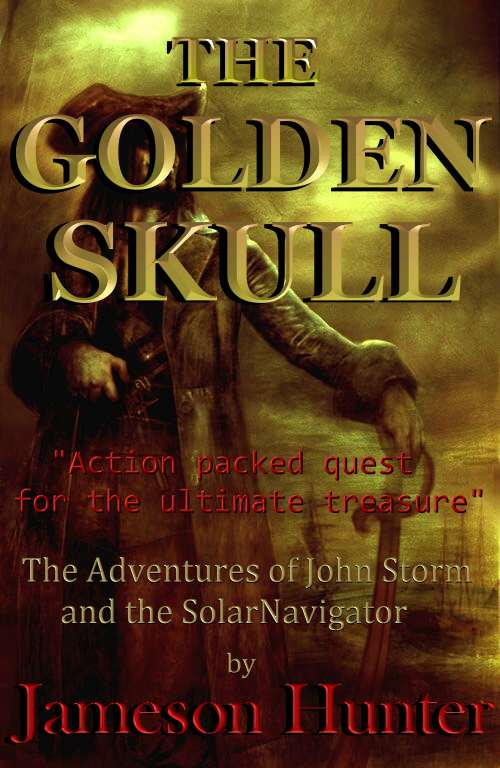
A
new world of adventure - a read the Bard could have penned
|
































